Yanfang Liu1,2, Hong Liu1,Yao Meng3
(1. State Key Laboratory of Robotics and System, Harbin Institute of Technology, Harbin 150001, China; 2. Department of Aerospace Engineering, Harbin Institute of Technology, Harbin 150001, China;3. Aerospace System Engineering Shanghai, Shanghai 201109, China)
Abstract:
The control problem of multiple-flexible-link manipulators (MFLMs) is studied in this paper.The dynamic model of MFLM is derived and separated into two-time scale by utilizing the singular perturbation technique. The active disturbance rejection control (ADRC) is adopted to the slow subsystem to track a desired trajectory. The proposed ADRC structure preshapes the desired trajectory by utilizing the tracking differentiator, estimates the disturbance and internal states with an extended state observer, and guarantees a robust performance by combining a feedback controller with a feedforward term.Two types of feedback controllers are designed, proportional derivative (PD) controller and nonlinear PD (NPD) controller. For the fast subsystem, a fast stabilizing control is designed according to the standard linear quadratic regulator approach. Simulations are performed to evaluate the proposed control scheme.Results show that, compared with the traditional PD controller, the ADRC structure based control scheme has smaller overshot and shorter settling time, suppresses vibration quickly, and is robust to the maneuver speed. In general, the control scheme utilizing ADRC structure and NPD feedback controller shows better performance.
Key words: multiple flexible link manipulator (MFLM) active disturbance rejection control (ADRC) nonlinear proportional plus derivative (NPD) tracking differentiator (TD) extended state observer (ESO)
DOI:10.11916/j.issn.1005-9113.16113
Clc Number:
Fund:
Yanfang Liu, Hong Liu, Yao Meng. Active Disturbance Rejection Control for a Multiple-Flexible-Link Manipulator[J]. Journal of Harbin Institute of Technology, 2018, 25(1): 18-28. DOI: 10.11916/j.issn.1005-9113.16113.

Fund Sponsored by the China Postdoctoral Science Foundation(Grant No.2014M560255), the Open Research Fund of the State Key Laboratory of Robotics and System (HIT) (Grant No.SKLRS-2013-ZD-05), the Heilongjiang Postdoctoral Found (Grant No. LBH-Z14107), and the Special Foundation of Heilongjiang Postdoctoral Science(Grant No. LBH-TZ1609) Corresponding author Yanfang Liu, E-mail: lyf04025121@126.com Article history Received: 2016-07-20
Contents Abstract Full text Figures/Tables PDF
Active Disturbance Rejection Control for a Multiple-Flexible-Link Manipulator
Yanfang Liu1,2

 , Hong Liu1, Yao Meng3
, Hong Liu1, Yao Meng3 1. State Key Laboratory of Robotics and System, Harbin Institute of Technology, Harbin 150001, China;
2. Department of Aerospace Engineering, Harbin Institute of Technology, Harbin 150001, China;
3. Aerospace System Engineering Shanghai, Shanghai 201109, China
Received: 2016-07-20
Fund: Sponsored by the China Postdoctoral Science Foundation(Grant No.2014M560255), the Open Research Fund of the State Key Laboratory of Robotics and System (HIT) (Grant No.SKLRS-2013-ZD-05), the Heilongjiang Postdoctoral Found (Grant No. LBH-Z14107), and the Special Foundation of Heilongjiang Postdoctoral Science(Grant No. LBH-TZ1609)
Corresponding author: Yanfang Liu, E-mail: lyf04025121@126.com
Abstract: The control problem of multiple-flexible-link manipulators (MFLMs) is studied in this paper.The dynamic model of MFLM is derived and separated into two-time scale by utilizing the singular perturbation technique. The active disturbance rejection control (ADRC) is adopted to the slow subsystem to track a desired trajectory. The proposed ADRC structure preshapes the desired trajectory by utilizing the tracking differentiator, estimates the disturbance and internal states with an extended state observer, and guarantees a robust performance by combining a feedback controller with a feedforward term.Two types of feedback controllers are designed, proportional derivative (PD) controller and nonlinear PD (NPD) controller. For the fast subsystem, a fast stabilizing control is designed according to the standard linear quadratic regulator approach. Simulations are performed to evaluate the proposed control scheme.Results show that, compared with the traditional PD controller, the ADRC structure based control scheme has smaller overshot and shorter settling time, suppresses vibration quickly, and is robust to the maneuver speed. In general, the control scheme utilizing ADRC structure and NPD feedback controller shows better performance.
Key words: multiple-flexible-link manipulator (MFLM) active disturbance rejection control (ADRC) nonlinear proportional plus derivative (NPD) tracking differentiator (TD) extended state observer (ESO)
1 Introduction The multiple-flexible-link manipulator (MFLM) has become the key equipment of the space station and is widely used to dock spacecraft and transfer cargo. Meanwhile, due to the potential advantages of lower cost, higher operational speed, and safer operation, it has also received increasing attentions in the equipment manufacturing industry.
However, lightweight construction causes link flexibility, which results in bending and vibration of the flexible links during, at the end of, and after the maneuver. Then, the rigid motion and flexible vibration are coupled in the MFLM. Meanwhile, due to the interaction of these motions, the dynamics of the MFLM is highly coupled, nonlinear, and complex, which, in turn, leads the modeling and control of the MFLM to be a challenging task.
The modeling work is aimed at providing precise model to describe the actual MFLM's behavior. Several approaches, such as finite element technique, assumed mode method, and lumped parameter models, have been proposed[1]. However, for the controller design application, the model is also required to be simple enough. The most common one is the adoption of the Euler-Lagrange formulation and assumed mode method, which yields closed-form expressions[1-4].
However, even for the simplified model, the controller design is still a difficult task since the controller has to follow a designed joint trajectory and cancel arms' vibrations simultaneously. In the literature, two-loop structure control schemes were investigated. The inner loop tracks the designed trajectory and guarantees robustness of the system.While the outer loop damps links' the vibration and deal with the unmodeled dynamics.The control scheme with proportional derivative (PD) inner-loop controller and proportional integral derivative (PID) outer-loop controller was proposed in Ref.[5]. The author further proposed an adaptive algorithm to tune PD and PID gains[6]. In Ref.[7], the outer-loop controller was designed based on the integral resonant control technique. Generalized proportional integral (GPI) controllers were proposed for both loops in Ref.[8], with disturbance compensated in the outer-loop based on an observer.The frequency identification and/or modal filter are also widely applied to the flexible-link manipulator. In Ref.[9], the author presented a control scheme, which combines the online natural frequency identification and the GPI output feedback controller, for a flexible robotic arm with unknown tip mass. A time-delay compensator combined with a modal filter was proposed in Ref.[10]. Other approaches, such as genetic learning approach[11], distributed control strategy[12], fuzzy logic control and H∞ control[13] were also investigated to control the flexible-link manipulator.
The MFLM is an under-actuated system since the single actuating torque has to control the joint's angular position and each link's vibration.Considering this feature and noting that the links' vibrations are relatively faster than the joints' rotation, singular perturbation technique is a candidate solution to the control problem of such under-actuated systems. Singular perturbation approach was employed to control the manipulator with flexible-joint[14-16], flexible-link[17-18], and both flexible-link and flexible-joint[4]. It was also applied to control of the flexible manipulator actuated by pneumatic actuators[19] and cooperate trajectory tracking of two robots[20].
Active disturbance rejection control (ADRC), originally presented in Ref.[21], combines the advantages of both model-based and model-free methods and provides significant contribution to the model uncertain[22-23]. The ADRC extends the system model to represent those internal and external disturbances (total disturbance). These extended states are estimated online and used to compensate the perturbation. However, the concept of ADRC was only used for rigid manipulators[22] and flexible-joint manipulators[23].
This paper proposes an integrated control scheme consisting of ADRC and linear quadratic regulator (LQR) technique is proposed to control MFLMs. The system of MFLM is separated into two subsystems via the singular perturbed technique. Then ADRC is applied to the slow subsystem. The proposed ADRC structure employs a tracking differentiator (TD), an extended state observer (ESO), and a feedback controller with feedforward term. The TD filter is used to preshape the desired trajectory, while the ESO is utilized to estimate the internal state as well as the total disturbance. Two feedback controllers were designed, namely PD and nonlinear PD (NPD) feedback controllers. For the fast subsystem, a fast stabilizing control is designed according to the standard LQR approach.
2 MFLM Model 2.1 Dynamic Model of MFLM The structure of MFLM is shown in Fig. 1. It consists of n flexible links, n rigid revolute joints, and a payload. Assume the MFLM is operated horizontally. The i-th flexible link is with length li, linear density ρi, and rigidity EIi. The driving torque τi is generated by the motors of the i-th joint. The rotation angle of the i-th joint is denoted as θi. The joints are considered as lumped-mass and their inertias are ignored. Thus, the i-th joint plays the role of a payload of the (i-1)-th link. The distal link is connected with a payload. The payload mass of the i-th link is mi.
Figure 1
 Figure 1 Structure of MFLM
Figure 1 Structure of MFLM Utilizing Euler-Lagrange formulation and assumed mode method, the dynamics of the MFLM is modeled as[1, 3-4]
$\mathit{\boldsymbol{M}}\left( {\mathit{\boldsymbol{\theta }},\mathit{\boldsymbol{q}}} \right)\left[ {\begin{array}{*{20}{c}}{\mathit{\boldsymbol{\ddot \theta }}}\\{\mathit{\boldsymbol{\ddot q}}}\end{array}} \right] + \mathit{\boldsymbol{H}}\left( {\mathit{\boldsymbol{\theta }},\mathit{\boldsymbol{\dot \theta }},\mathit{\boldsymbol{q}},\mathit{\boldsymbol{\dot q}}} \right) + \left[ {\begin{array}{*{20}{c}}0&0\\0&\mathit{\boldsymbol{K}}\end{array}} \right]\left[ {\begin{array}{*{20}{c}}\mathit{\boldsymbol{\theta }}\\\mathit{\boldsymbol{q}}\end{array}} \right] = \left[ {\begin{array}{*{20}{c}}\mathit{\boldsymbol{\tau }}\\0\end{array}} \right]$ (1)
where M(θ, q) and K represent the matrixes of mass and stiffness;
The mass matrix M(θ, q) is symmetric and positive defined. Then M(θ, q) and its inverse N(θ, q) is partitioned as:
$\mathit{\boldsymbol{M}} = \left[ {\begin{array}{*{20}{c}}{{\mathit{\boldsymbol{M}}_{\theta \theta }}}&{{\mathit{\boldsymbol{M}}_{\theta q}}}\\{\mathit{\boldsymbol{M}}_{\theta q}^{\rm{T}}}&{{\mathit{\boldsymbol{M}}_{\theta q}}}\end{array}} \right],\mathit{\boldsymbol{N}} = \left[ {\begin{array}{*{20}{c}}{{\mathit{\boldsymbol{N}}_{\theta \theta }}}&{{\mathit{\boldsymbol{N}}_{\theta q}}}\\{\mathit{\boldsymbol{N}}_{\theta q}^{\rm{T}}}&{{\mathit{\boldsymbol{N}}_{\theta q}}}\end{array}} \right]$
satisfying:
$\mathit{\boldsymbol{M}}_{\theta \theta }^{ - 1} = {\mathit{\boldsymbol{N}}_{\theta \theta }} - {\mathit{\boldsymbol{N}}_{\theta q}}\mathit{\boldsymbol{N}}_{qq}^{ - 1}\mathit{\boldsymbol{N}}_{\theta q}^{\rm{T}}$
By partitioning
$\mathit{\boldsymbol{H}}\left( {\mathit{\boldsymbol{\theta }},\mathit{\boldsymbol{\dot \theta }},\mathit{\boldsymbol{q}},\mathit{\boldsymbol{\dot q}}} \right) = \left[ \begin{array}{l}{\mathit{\boldsymbol{H}}_\theta }\left( {\mathit{\boldsymbol{\theta }},\mathit{\boldsymbol{\dot \theta }},\mathit{\boldsymbol{q}},\mathit{\boldsymbol{\dot q}}} \right)\\{\mathit{\boldsymbol{H}}_q}\left( {\mathit{\boldsymbol{\theta }},\mathit{\boldsymbol{\dot \theta }},\mathit{\boldsymbol{q}},\mathit{\boldsymbol{\dot q}}} \right)\end{array} \right]$
The dynamics in Eq.(1) is rewritten as:
$\mathit{\boldsymbol{\ddot \theta }} = {\mathit{\boldsymbol{N}}_{\theta \theta }}\left( {\mathit{\boldsymbol{\tau }} - {\mathit{\boldsymbol{H}}_\theta }} \right) - {\mathit{\boldsymbol{N}}_{\theta q}}\left( {\mathit{\boldsymbol{Kq}} + {\mathit{\boldsymbol{H}}_q}} \right)$
$\mathit{\boldsymbol{\ddot q}} = \mathit{\boldsymbol{N}}_{\theta q}^{\rm{T}}\left( {\mathit{\boldsymbol{\tau }} - {\mathit{\boldsymbol{H}}_\theta }} \right) - {\mathit{\boldsymbol{N}}_{qq}}\left( {\mathit{\boldsymbol{Kq}} + {\mathit{\boldsymbol{H}}_q}} \right)$
2.2 Two-time Scale Singular Perturbation Model A perturbation parameter μ is defined as[17]:
${\mu ^{ - 1}} = \sqrt {{\mu _{\min }}\left( {{\mathit{\boldsymbol{N}}_{qq,0}}\mathit{\boldsymbol{K}}} \right)} $ (2)
where, Nqq, 0= Nqq|q =0 and μmin(Nqq, 0K) are the smallest eigenvalues of the matrix (NqqK) when θ varies in the specified operation range and q=0, i.e. there is no deformation in flexible links. In general, μ depends not only on the stiffness of links, but also on the configuration of the MFLM, namely θ. The MFLM tends to be a rigid manipulator if μ→0. If the bandwidth required in the angular position tracking system is much smaller than the first flexible mode, i.e. μ is actually small, the rigid body dynamics can be separated from the flexible dynamics. Scale K with the factor μ2 as
$\begin{array}{l}\mathit{\boldsymbol{\ddot \theta }} = {\mathit{\boldsymbol{N}}_{\theta \theta }}\left[ {\mathit{\boldsymbol{\tau }} - {\mathit{\boldsymbol{H}}_\theta }\left( {\mathit{\boldsymbol{\theta }},\mathit{\boldsymbol{\dot \theta }},{\mu ^2}\mathit{\boldsymbol{z}},{\mu ^2}\mathit{\boldsymbol{\dot z}}} \right)} \right] - \\\;\;\;\;\;\;{\mathit{\boldsymbol{N}}_{\theta q}}\left[ {\mathit{\boldsymbol{\tilde Kz}} + {\mathit{\boldsymbol{H}}_q}\left( {\mathit{\boldsymbol{\theta }},\mathit{\boldsymbol{\dot \theta }},{\mu ^2}\mathit{\boldsymbol{z}},{\mu ^2}\mathit{\boldsymbol{\dot z}}} \right)} \right]\end{array}$ (3)
$\begin{array}{l}{\mathit{\boldsymbol{\mu }}^2}\mathit{\boldsymbol{\ddot z}} = \mathit{\boldsymbol{N}}_{\theta q}^{\rm{T}}\left[ {\mathit{\boldsymbol{\tau }} - {\mathit{\boldsymbol{H}}_\theta }\left( {\mathit{\boldsymbol{\theta }},\mathit{\boldsymbol{\dot \theta }},{\mu ^2}\mathit{\boldsymbol{z}},{\mu ^2}\mathit{\boldsymbol{\dot z}}} \right)} \right] - \\\;\;\;\;\;\;\;\;\;{\mathit{\boldsymbol{N}}_{qq}}\left[ {\mathit{\boldsymbol{\tilde Kz}} + {\mathit{\boldsymbol{H}}_q}\left( {\mathit{\boldsymbol{\theta }},\mathit{\boldsymbol{\dot \theta }},{\mu ^2}\mathit{\boldsymbol{z}},{\mu ^2}\mathit{\boldsymbol{\dot z}}} \right)} \right]\end{array}$ (4)
Let μ=0, then the boundary layer correction and the slow time scale dynamics are derived as:
$\begin{array}{l}{{\mathit{\boldsymbol{\ddot \theta }}}_{\rm{s}}} = {\mathit{\boldsymbol{N}}_{\theta \theta ,{\rm{s}}}}\left[ {{\mathit{\boldsymbol{\tau }}_{\rm{s}}} - {\mathit{\boldsymbol{H}}_{\theta ,{\rm{s}}}}\left( {{\mathit{\boldsymbol{\theta }}_{\rm{s}}},{{\mathit{\boldsymbol{\dot \theta }}}_{\rm{s}}},0,0} \right)} \right] - \\\;\;\;\;\;\;{\mathit{\boldsymbol{N}}_{\theta q,{\rm{s}}}}\left[ {\mathit{\boldsymbol{\tilde K}}{\mathit{\boldsymbol{z}}_{\rm{s}}} + {\mathit{\boldsymbol{H}}_{q,{\rm{s}}}}\left( {{\mathit{\boldsymbol{\theta }}_{\rm{s}}},{{\mathit{\boldsymbol{\dot \theta }}}_{\rm{s}}},0,0} \right)} \right]\end{array}$ (5)
$\begin{array}{l}\mathit{\boldsymbol{0}} = \mathit{\boldsymbol{N}}_{\theta q,{\rm{s}}}^{\rm{T}}\left[ {{\mathit{\boldsymbol{\tau }}_{\rm{s}}} - {\mathit{\boldsymbol{H}}_{\theta ,{\rm{s}}}}\left( {{\mathit{\boldsymbol{\theta }}_{\rm{s}}},{{\mathit{\boldsymbol{\dot \theta }}}_{\rm{s}}},0,0} \right)} \right] - \\\;\;\;\;\;{\mathit{\boldsymbol{N}}_{qq,{\rm{s}}}}\left[ {\mathit{\boldsymbol{\tilde K}}{\mathit{\boldsymbol{z}}_{\rm{s}}} + {\mathit{\boldsymbol{H}}_{q,{\rm{s}}}}\left( {{\mathit{\boldsymbol{\theta }}_{\rm{s}}},{{\mathit{\boldsymbol{\dot \theta }}}_{\rm{s}}},0,0} \right)} \right]\end{array}$ (6)
where the subscript 's' represents the slow time scale quantities, i.e. for μ=0. The slow manifold is solved from Eq.(6)as:
$\begin{array}{l}{\mathit{\boldsymbol{z}}_s} = {{\mathit{\boldsymbol{\tilde K}}}^{ - 1}}\left[ {\mathit{\boldsymbol{N}}_{qq,{\rm{s}}}^{ - 1}\mathit{\boldsymbol{H}}_{\theta q,{\rm{s}}}^{\rm{T}}\left( {{\mathit{\boldsymbol{\tau }}_{\rm{s}}} - {\mathit{\boldsymbol{H}}_{\theta ,{\rm{s}}}}\left( {{\mathit{\boldsymbol{\theta }}_{\rm{s}}},{{\mathit{\boldsymbol{\dot \theta }}}_{\rm{s}}},0,0} \right)} \right) - } \right.\\\;\;\;\;\;\;\;\left. {{\mathit{\boldsymbol{H}}_{q,{\rm{s}}}}\left( {{\mathit{\boldsymbol{\theta }}_{\rm{s}}},{{\mathit{\boldsymbol{\dot \theta }}}_{\rm{s}}},0,0} \right)} \right]\end{array}$ (7)
Substituting Eq.(7) into Eq.(5) yields the slow subsystem as:
${{\mathit{\boldsymbol{\ddot \theta }}}_{\rm{s}}} = - \mathit{\boldsymbol{M}}_{\theta \theta ,{\rm{s}}}^{ - 1}{\mathit{\boldsymbol{H}}_{\theta ,{\rm{s}}}}\left( {{\mathit{\boldsymbol{\theta }}_{\rm{s}}},{{\mathit{\boldsymbol{\dot \theta }}}_{\rm{s}}},0,0} \right) + \mathit{\boldsymbol{M}}_{\theta \theta ,{\rm{s}}}^{ - 1}{\mathit{\boldsymbol{\tau }}_{\rm{s}}}$ (8)
Letting the slow variables be constants and defining the fast variable and the fast control to be zf:= z-zs and τf:= τ-τs, the fast subsystem in Eq.(4) becomes:
$\frac{{{{\rm{d}}^2}{z_{\rm{f}}}}}{{{\rm{d}}{\sigma ^2}}} = \mathit{\boldsymbol{N}}_{\theta q}^{\rm{T}}{\mathit{\boldsymbol{\tau }}_f} - {\mathit{\boldsymbol{N}}_{qq}}\mathit{\boldsymbol{\tilde K}}{\mathit{\boldsymbol{z}}_f}$
where σ=t/μ is the fast time scale.
3 Design of the Composite Control Scheme The composite controller is illustrate in Fig. 2. Then, the control torque τ is given by:
Figure 2
 Figure 2 Composite control scheme (DL: Decoupling Law; BLC: Boundary Layer Correction)
Figure 2 Composite control scheme (DL: Decoupling Law; BLC: Boundary Layer Correction) $\mathit{\boldsymbol{\tau }} = {\mathit{\boldsymbol{\tau }}_{\rm{s}}} + {\mathit{\boldsymbol{\tau }}_f}$
where, the slow control τs is derived via ADRC method and the fast control τf is designed based on LQR approach.
3.1 Active Disturbance Rejection Controller The slow subsystem in Eq.(8)can be reformulated as:
${{\mathit{\boldsymbol{\ddot \theta }}}_{\mathit{s}}} = \mathit{\boldsymbol{f}}\left( \cdot \right) + \mathit{\boldsymbol{u}}$ (9)
where
$\begin{array}{*{20}{c}}{\mathit{\boldsymbol{f}}\left( \cdot \right) = {{\left[ {\begin{array}{*{20}{c}}{{f_1}\left( \cdot \right)}&{{f_2}\left( \cdot \right)}& \cdots &{{f_n}\left( \cdot \right)}\end{array}} \right]}^{\rm{T}}} = }\\{ - \mathit{\boldsymbol{M}}_{\theta \theta ,{\rm{s}}}^{ - 1}{\mathit{\boldsymbol{H}}_{\theta ,{\rm{s}}}}\left( {{\mathit{\boldsymbol{\theta }}_{\mathit{s}}},{{\mathit{\boldsymbol{\dot \theta }}}_{\rm{s}}},0,0} \right)}\end{array}$
represents the total disturbance, namely both the internal and external uncertainties,
$\mathit{\boldsymbol{u}} = {\left[ {\begin{array}{*{20}{c}}{{u_1}}&{{u_2}}& \cdots &{{u_n}}\end{array}} \right]^{\rm{T}}} = \mathit{\boldsymbol{M}}_{\theta \theta ,{\rm{s}}}^{ - 1}{\mathit{\boldsymbol{\tau }}_{\rm{s}}}$ (10)
is the virtual control.
The model is extended with an additional state to represent the total disturbance, which is estimated via ESO and further compensated.
Let xi1=θi, s and xi2=
$\left\{ \begin{array}{l}{{\dot x}_{i1}} = {x_{i2}}\\{{\dot x}_{i2}} = {f_i}\left( \cdot \right) + {u_i}\end{array} \right.$ (11)
Assuming that fi(·) is m times differentiable and introducing augmented states xi3=fi(·), xi4=
$\left\{ \begin{array}{l}{{\dot x}_{i1}} = {x_{i2}}\\{{\dot x}_{i2}} = {x_{i3}} + {u_i}\\{{\dot x}_{i3}} = {{\dot f}_i}\left( \cdot \right)\\{{\dot x}_{i4}} = {{\ddot f}_i}\left( \cdot \right)\\\; \vdots \\{{\dot x}_{i\left( {2 + m} \right)}} = f_i^{\left( m \right)}\left( \cdot \right)\end{array} \right.$
Assuming that
$\left\{ \begin{array}{l}{{\dot {\hat x}}_{i1}} = {{\hat x}_{i2}} - {\beta _{i1}}{{\hat e}_i}\\{{\dot {\hat x}}_{i2}} = {{\hat x}_{i3}} - {\beta _{i2}}{{\hat e}_i} + {u_i}\\{{\dot {\hat x}}_{i3}} = {{\hat x}_{i4}} - {\beta _{i3}}{{\hat e}_i}\\{{\dot {\hat x}}_{i4}} = {{\hat x}_{i5}} - {\beta _{i4}}{{\hat e}_i}\\\; \vdots \\{{\dot {\hat x}}_{i\left( {2 + m} \right)}} = - {\beta _{i\left( {2 + m} \right)}}{{\hat e}_i}\end{array} \right.$
where
The ESO gains can be obtained by comparing the roots of the characteristic polynomial,
$\lambda \left( s \right) = {s^{2 + m}} + {\beta _{i1}}{s^{2 + m - 1}} + \cdots + {\beta _{i\left( {2 + m - 1} \right)}}s + {\beta _{i\left( {2 + m} \right)}}$
to the following polynomial
$G\left( s \right) = {\left( {s + {\omega _0}} \right)^{2 + m}}$
Which placed all the observer poles in the left half plane at -ω0, making the characteristic polynomial a Hurwitz-type[24].
Assuming that
${u_i} = - {{\hat x}_{i3}} + {{\bar u}_i}$ (12)
into Eq.(11), the i-th subsystem becomes a double integrator system
$\left\{ \begin{array}{l}{{\dot x}_{i1}} = {x_{i2}}\\{{\dot x}_{i2}} = {{\bar u}_i}\end{array} \right.$
Then, a simple controller combining PD feedback and a feedforward term can be designed as:
${{\bar u}_i} = {{\ddot \theta }_{{\rm{d}}i}} + {k_{{\rm{p}}i}}{e_{{\rm{p}}i}} + {k_{{\rm{d}}i}}{e_{{\rm{d}}i}}$ (13)
where
${e_{{\rm{p}}i}} = {\theta _{{\rm{d}}i}} - {{\hat x}_{i1}},{e_{{\rm{d}}i}} = {{\dot e}_{{\rm{p}}i}} = {{\dot \theta }_{{\rm{d}}i}} - {{\hat x}_{i2}}$
with θdi being the desired angular position of the i-th link, kpi and kdi being the proportional and derivative gains, respectively. Under the assumption of perfect estimation, i.e.
${{\ddot e}_{{\rm{p}}i}} + {k_{{\rm{d}}i}}{{\dot e}_{{\rm{p}}i}} + {k_{{\rm{p}}i}}{e_{{\rm{p}}i}} = 0$ (14)
Thus, kpi and kdi can be designed to make the above system stable and shape its response.
The desired angular position, θdi, can be measured directly from the encoder placed on the motor shaft. However, the rate and acceleration of the angular position,
$\left\{ \begin{array}{l}{x_1}\left( {k + 1} \right) = {x_1}\left( k \right) + h{x_2}\left( k \right)\\{x_2}\left( {k + 1} \right) = {x_2}\left( k \right) + h{f_{{\rm{fh}}}}\left( {{x_1} - u,{x_2},r,{h_0}} \right)\end{array} \right.$
where x1, x2, and u represent state variables and the control input, respectively; h is the step size; h0 and r are designed filter and speed factor, respectively; and the function ffh(x1, x2, r, h0) is defined as:
$\left\{ \begin{array}{l}d = r{h_0}\\{d_0} = {h_0}d\\y = {x_1} + {h_0}{x_2}\\{a_0} = \sqrt {{d^2} + 8r\left| y \right|} \\a = \left\{ \begin{array}{l}{x_2} + 0.5\left( {{a_0} - d} \right){\rm{sign}}\left( y \right),\;\;\;\;\left| y \right| > {d_0}\\{x_2} + y/{h_0},\;\;\;\;\;\;\;\;\;\;\;\;\;\;\;\;\;\;\;\;\;\;\;\;\left| y \right| \le {d_0}\end{array} \right.\\{f_{{\rm{fh}}}} = - \left\{ \begin{array}{l}r{\rm{sign}}\left( a \right),\;\;\;\;\left| a \right| > d\\ra/d,\;\;\;\;\;\;\;\;\;\left| a \right| \le d\end{array} \right.\end{array} \right.$
Remark 3.1??Thanks to the separation principle, the parameters tuning for the TD filer, the ESO, and the PD controller can be taken place independently. To make the separation principle holds, the bandwidths of the TD filter and the ESO need to be relatively higher than that of the PD controller.
Replace the real rate and acceleration of the angular position by the estimated ones, which are denoted as
${u_i} = \left( {{{\hat {\ddot \theta} }_{{\rm{d}}i}} - {{\hat x}_{i3}}} \right) + {k_{{\rm{d}}i}}\left( {{{\hat {\dot \theta }}_{{\rm{d}}i}} - {{\hat x}_{i2}}} \right) + {k_{{\rm{p}}i}}\left( {{{\hat \theta }_{{\rm{d}}i}} - {{\hat x}_{i1}}} \right)$
Then the control input of the slow subsystem can be calculated from Eq.(10) as:
${\mathit{\boldsymbol{\tau }}_{\rm{s}}} = {\mathit{\boldsymbol{M}}_{\theta \theta ,{\rm{s}}}}\mathit{\boldsymbol{u}}$
The terms epi and edi in Eq.(13) can also be replaced by a nonlinear function ffal(x, α, δ)[21]:
${f_{{\rm{fal}}}}\left( {x,\alpha ,\delta } \right) = \left\{ \begin{array}{l}{\left| x \right|^\alpha }{\rm{sign}}\left( x \right),\;\;\;\;\left| x \right| > \delta \\\frac{x}{{{\delta ^{1 - \alpha }}}},\;\;\;\;\;\;\;\;\;\;\;\;\;\left| x \right| \le \delta \end{array} \right.$
Where δ > 0, 0 < α < 1. Then a NPD controller is obtained as:
${{\bar u}_i} = {{\ddot \theta }_{{\rm{d}}i}} + {k_{{\rm{p}}i}}{f_{{\rm{fal}}}}\left( {{e_{{\rm{p}}i}},{\alpha _{{\rm{p}}i}},{\delta _{{\rm{p}}i}}} \right) + {k_{{\rm{d}}i}}{f_{{\rm{fal}}}}\left( {{e_{{\rm{d}}i}},{\alpha _{{\rm{d}}i}},{\delta _{{\rm{d}}i}}} \right)$
Remark 3.2??As shown in Fig. 3, for small error, the function ffal(x, α, δ) provides high gain. In the neighborhood of origin the gain is limited by choosing a small δ. By tuning the parameters α and δ, different gains are obtained as tracking error varies.
Figure 3
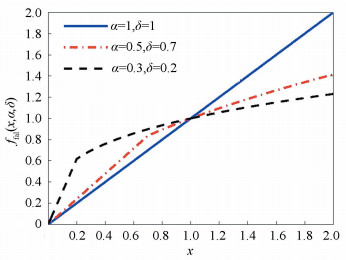 Figure 3 The property of the function ffal(x, α, δ)
Figure 3 The property of the function ffal(x, α, δ) 3.2 LQR Controller for the Fast Subsystem The state space representation of the fast subsystem is:
${{\mathit{\boldsymbol{\dot x}}}_f} = {\mathit{\boldsymbol{A}}_f}{\mathit{\boldsymbol{x}}_f} + {\mathit{\boldsymbol{B}}_f}{\mathit{\boldsymbol{u}}_f}$
where
${\mathit{\boldsymbol{A}}_f} = \left[ {\begin{array}{*{20}{c}}0&\mathit{\boldsymbol{I}}\\{ - {\mathit{\boldsymbol{N}}_{qq}}\mathit{\boldsymbol{\tilde K}}}&0\end{array}} \right],{\mathit{\boldsymbol{B}}_f} = \left[ {\begin{array}{*{20}{c}}0\\{\mathit{\boldsymbol{N}}_{\theta q}^{\rm{T}}}\end{array}} \right],{\mathit{\boldsymbol{x}}_f} = \left[ {\begin{array}{*{20}{c}}{{z_f}}\\{\frac{{{\rm{d}}{z_f}}}{{{\rm{d}}\sigma }}}\end{array}} \right]$
Since the pair (Af, Bf) is completely controllable, optimal control technique can be applied to achieve a fast vibration depression. The object function is chosen as:
$J = \frac{1}{2}\int_0^\infty {\left[ {\mathit{\boldsymbol{x}}_f^{\rm{T}}{\mathit{\boldsymbol{Q}}_f}{\mathit{\boldsymbol{x}}_f} + \mathit{\boldsymbol{\tau }}_f^{\rm{T}}{\mathit{\boldsymbol{R}}_f}{\mathit{\boldsymbol{\tau }}_f}} \right]{\rm{d}}t} $
where Qf and Rf are weighting matrices. Following the standard LQR design approach, the fast control is derived as:
${\mathit{\boldsymbol{\tau }}_f} = - {\mathit{\boldsymbol{K}}_f}{\mathit{\boldsymbol{x}}_f} + {\mathit{\boldsymbol{K}}_f}\left[ {\begin{array}{*{20}{c}}{{z_{\rm{s}}}}\\0\end{array}} \right]$ (15)
where
$\mathit{\boldsymbol{K}} = - \mathit{\boldsymbol{R}}_f^{ - 1}\mathit{\boldsymbol{B}}_f^{\rm{T}}{\mathit{\boldsymbol{P}}_f}\left( t \right)$
and Pf is solved from the Riccati equation:
${\mathit{\boldsymbol{P}}_f}\left( t \right) = - {\mathit{\boldsymbol{P}}_f}\left( t \right){\mathit{\boldsymbol{A}}_f} - \mathit{\boldsymbol{A}}_f^{\rm{T}}{\mathit{\boldsymbol{P}}_f}\left( t \right) + {\mathit{\boldsymbol{P}}_f}\left( t \right){\mathit{\boldsymbol{B}}_f}\mathit{\boldsymbol{R}}_f^{ - 1}\mathit{\boldsymbol{B}}_f^{\rm{T}}{\mathit{\boldsymbol{P}}_f}\left( t \right) - {\mathit{\boldsymbol{Q}}_f}$
Remark 3.3??The first term in the fast controller is derived from LQR approach, while the second term is employed to compensate for the slow control and referred to as the boundary layer correction (BLC).
Implementing the full state feedback control in Eq.(15) requires zf to be available. Thus the links' deflections and their time derivatives, i.e. q and
4 A Case Study 4.1 Simulation Parameters The proposed control scheme is verified via numerical study. The manipulator considered has two flexible links and each link has two assumed modes. The dynamic model is derived according to Section 2 and using the physical parameters given in Table 1, where m1, 0 and m2, 0 refer to initial payloads. The fourth-order Runge-Kutta solver is utilized to solve the simulation. The sampling time is 0.000 5 s.
表 1
5.5 2.75 1.4 0.62 1 1 122 21.8
Table 1 Physical parameters
Let the operation range be {(θ1, θ2)|θ1∈[0, 2π], θ2∈[0, 2π]}, then the perturbation parameter in Eq.(2) is calculated as μ=0.016 7 s. The smallest natural frequency is 59.81 rad/s. The poles is placed at -2.5. Then, the feedback gains are calculated as kdi=5 and kpi=6.25. With the above parameters, the bandwidth of the closed slow subsystem (without the feedforward term
${\mathit{\boldsymbol{Q}}_f} = {\rm{diag}}\left( {100,10,10,10,10,10,10,10} \right)$
${\mathit{\boldsymbol{R}}_f} = {\rm{diag}}\left( {100,10} \right)$
Then the feedback gain of the fast controller is calculated as:
$\mathit{\boldsymbol{K}}_f^{\rm{T}} = \left[ {\begin{array}{*{20}{c}}{ - 0.034\;2}&{0.046\;5}\\{0.055\;8}&{ - 0.082\;7}\\{ - 0.040\;1}&{ - 0.033\;1}\\{ - 0.006\;5}&{0.077\;4}\\{ - 0.593\;4}&{0.630\;2}\\{0.208\;6}&{ - 0.205\;4}\\{ - 0.364\;2}&{ - 0.349\;2}\\{ - 0.111\;4}&{0.293\;3}\end{array}} \right]$
The maneuver trajectory is designed as:
${\theta _i} = \left\{ \begin{array}{l}\frac{{{a_i}}}{2}\left[ {\sin \left( {{\omega _i}t - \frac{{\rm{ \mathsf{ π} }}}{2}} \right) + 1} \right],\;\;\;\;{\omega _i}t \le {\rm{ \mathsf{ π} }}\\{a_i},\;\;\;\;\;\;\;\;\;\;\;\;\;\;\;\;\;\;\;\;\;\;\;\;\;\;\;\;\;\;\;{\omega _i}t > {\rm{ \mathsf{ π} }}\end{array} \right.$
where i=1, 2, ai and ωi are the desired final angular position and maneuver speed, respectively.
4.2 Relatively Slow Speed Maneuver In the first set of simulations, relatively slow speed maneuver is tested by setting ω1=ω2=2 rad/s. The desired angular positions of both joints are a1=π/3 rad and a2=π/4 rad. With the initial payload only, the tracking performance of different controllers is shown in Fig. 4. Herein and after, ADRC-PD refers to the controller utilizing ADRC structure and PD feedback controller and ADRC-NPD refers to that with ADRC structure and NPD feedback controller. For comparison, the PD controller proposed in Ref.[14] is designed and results are also presented in Fig. 4. The superiority of the ADRC controllers is significant in reducing tracking error and vibration.Using ADRC-PD, the overshot of θ1 and θ2 are 4.75% and 4.82%, respectively. And the settling times are respectively 2.49 s and 2.29 s. The performance of PD controller is worse. The overshots are 8.76% and 13.20%, and the settling times are 2.99 s and 3.17 s, respectively. The ADRC-NPD controller improves the performance slightly. The overshot decrease to 4.74% and 3.54%, and the settling times reduce to 2.05 s and 1.79 s, respectively. Seen from Figs. 4(c)-(d), all the three controllers have similar performance in reducing the oscillations of both links.
Figure 4
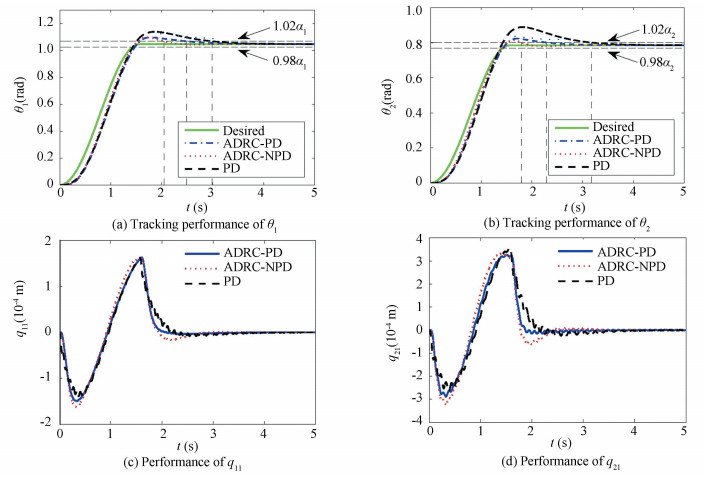 Figure 4 Tracking performance at ω1= ω2= 2 rad/s
Figure 4 Tracking performance at ω1= ω2= 2 rad/s If the payload increases, namely m1=m1, 0+ΔMp, m2=m2, 0+ΔMp, ΔMp being the increase of the payload, the performance is comprised in Fig. 5. The responses of joints' positions are similar. However, there is a slight vibration in the links, especially for the PD controller.
Figure 5
 Figure 5 Tracking performance with ΔMp=24.75 kg at ω1= ω2= 2 rad/s
Figure 5 Tracking performance with ΔMp=24.75 kg at ω1= ω2= 2 rad/s 4.3 Relatively Fast Speed Maneuver For the second set of simulations, a relatively fast speed maneuver is tested. The parameters for the desired trajectory are ω1=ω2=50 rad/s. As shown in Figs. 6(a)-(b), due to bandwidth limitation, all three controllers cannot follow the desired trajectory at the initial stage since the desired angular positions increase rapidly. Similar as the slow speed maneuver case, the ADRC-NPD has the smallest overshot and settling time, i.e. 0.94 s, 3.60% for θ1 and 0.74 s, 7.24% for θ2. The PD controller has the worst performance, the overshot for θ1 and θ2 are 11.25% and 22.08% and the settling time are 2.14 s and 2.35 s, respectively. Meanwhile, seen from Figs. 6(c)-(d), the ADRC-PD and ADRC-NPD smooth down the oscillations of both links more quickly than the PD controller.
Figure 6
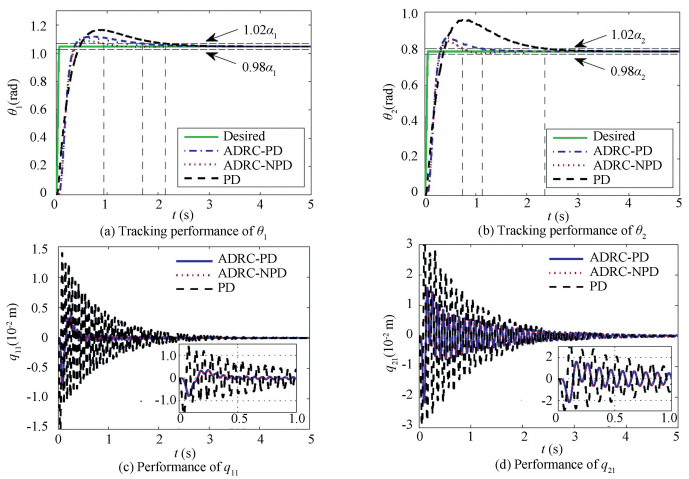 Figure 6 Tracking performance at ω1= ω2= 50 rad/s
Figure 6 Tracking performance at ω1= ω2= 50 rad/s As shown in Fig. 7, with an increase in the payload, the overshot of θ1 increases slightly for ADRC-PD controller and ADRC-NPD controller, whereas there is no overshot by utilizing the PD controller. However, the response of the PD controller becomes slowly. The reason is that, with these parameters, the system with PD controller becomes an over damping system. Seen from the response of θ2, the overshot decreases for all the three controllers. However, as seen from the response of link 2, the oscillation is much larger when the PD controller is employed.
Figure 7
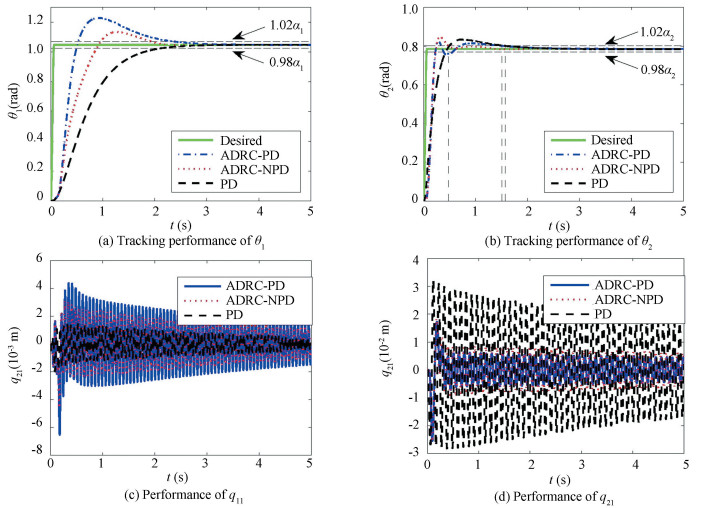 Figure 7 Tracking performance with ΔMp=24.75 kg at ω1= ω2= 50 rad/s
Figure 7 Tracking performance with ΔMp=24.75 kg at ω1= ω2= 50 rad/s 4.4 Performance at Different Maneuver Speeds The performance of the three controllers are also tested at different maneuver speeds and summarized in Fig. 8, where the maneuver speed is drawn by ω=ω1=ω2. Generally, the settling time of all the three controllers decreases with ω. Especially, when ω < 10 rad/s, the settling time decreases rapidly. This indicates that the controllers have sufficiently wide bandwidth. However, the maneuver speed is limited by the desired maneuver trajectory. When ω > 10 rad/s, the maneuver speed is limited by the bandwidth of the controllers. Then, a fast desired maneuver trajectory can only increase the maneuver speed slightly. The ADRC-NPD can achieve the smallest settling time while that of the PD controller is the largest. Seen from Figs. 8(c)-(d), for the ADRC-PD and PD controller, a faster maneuver speed generally causes a larger overshot. However, for the ADRC-NPD, the overshot increases with ω firstly and then decreases with it. This is caused by the nonlinear function ffal(x, α, δ), which yields a large gain when x is small. When it is added to the D-term of the controller, a larger damping is obtained even when the rate of the tracking error is small, see Fig. 3. Compared with PD controller, both of the ADRC-PD and ADRC-NPD controllers can realize a smaller overshot.
Figure 8
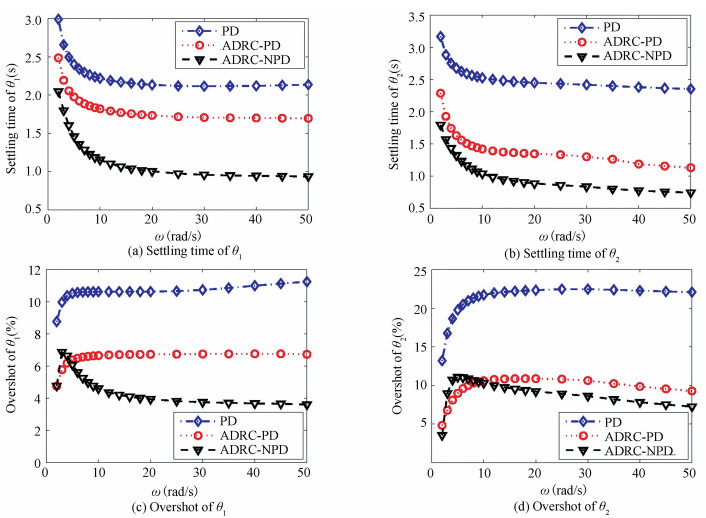 Figure 8 Settling time and overshot of θ1 and θ2 at different maneuver speeds
Figure 8 Settling time and overshot of θ1 and θ2 at different maneuver speeds To further compare the tracking performance of three controllers, the index mean square error (MSE) is introduced as:
$M\left( x \right) = \sqrt {\frac{1}{{{t_{\rm{f}}}}}\int_0^{{t_{\rm{f}}}} {{{\left( {{x_{\rm{d}}} - x} \right)}^2}{\rm{d}}t} } = \sqrt {\frac{1}{N}\sum\limits_N {{{\left( {{x_{\rm{d}}} - x} \right)}^2}} } $ (16)
where tf is the total time of the simulation and N is the number of samples. The MSEs for three controllers at different maneuver speed are shown in Fig. 9. Generally, the MSEs of three controllers increase with ω and ADRC-PD and ADRC-NPD have similar performance. For θ2, the performance of ADRC-PD and ADRC-NPD is always better than that of PD controller. However, for θ1, the ADRC-PD and ADRC-NPD controller has smaller MSE only when the maneuver speed is small. As the desired maneuver speed increases, the bandwidth limit of ESO and TD filter will cause an obvious delay at the initial stage when the desired angular position increases rapidly, see Fig. 6. As shown in Fig. 10 and noting the squire operator in Eq.(16), the error caused by the delay at the initial stage results in a larger MSE index.
Figure 9
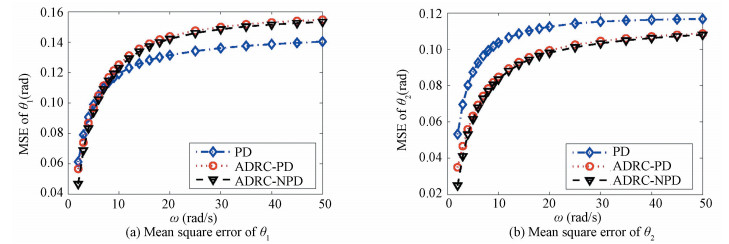 Figure 9 Summary of tracking performance at different maneuver speeds
Figure 9 Summary of tracking performance at different maneuver speeds Figure 10
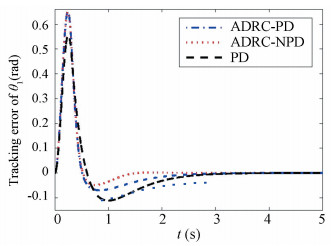 Figure 10 Tracking error of θ1 at ω1=ω2=10 rad/s
Figure 10 Tracking error of θ1 at ω1=ω2=10 rad/s The performances of these controllers with different payloads are shown in Fig. 11. For the relative slow maneuver, i.e. ω≤10 rad/s, the MSEs of θ1 and θ2 is robust to the payload mass for all the three controller. However, the MSEs of θ1 and θ2 increase with maneuver speed. For the response of θ1, the ADRC-NPD controller has a better performance if the maneuver speed is small but worse than PD controller if the speed increases. The reason has been explained above. However, for the response of θ1, the ADRC-NPD controller has better performance, no matter what the payload mass and the maneuver speed are.
Figure 11
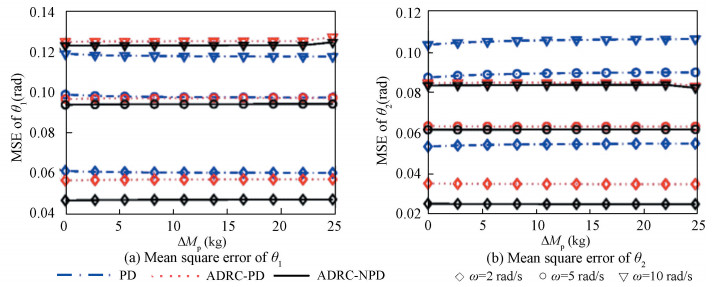 Figure 11 Summary of tracking performance with different payload
Figure 11 Summary of tracking performance with different payload 5 Conclusions and Discussions This paper focuses on application of the active disturbance rejection control (ADRC) on the multiple-flexible-link manipulator (MFLM). The dynamics of the MFLM is modeled and separated into two-time scale based on singular perturbation technique. The ADRC structure consisting of a tracking differentiator (TD) filter, an extended state observer (ESO), and a feedback controller is applied to the slow subsystem. The TD filter is employed to generate the derivation of the desired trajectory and the ESO is utilized to estimate the states as well as the total disturbance. The feedback controller can be a linear one, proportional derivation (PD) for example, or a nonlinear one, i.e. nonlinear PD controller. The controller for the fast subsystem is designed by following standard linear quadratic regulator approach. The simulation demonstrates the superiority of controllers based on ADRC structure. Generally, the ADRC structure based controllers have a superior performance on settling time, overshot, vibration cancelling, and etc. It is robust to the maneuver speed. However, the stability proof is a difficult task. And more parameters need to be adjusted. In the future, more detailed work will be carried out on the experiment research on the application of ADRC structure based controllers on the MFLM. The method how to adjust the parameters and how to handle the uncertain payload will be focused on in the next step work.
References
[1] Dwivedy S K, Eberhard P. Dynamic analysis of flexible manipulators, a literature review. Mechanism and Machine Theory, 2006, 41(7): 749-777. DOI:10.1016/j.mechmachtheory.2006.01.014 (
 0)
0)[2] Du Luca A, Siciliano B. Closed-form dynamic model of planar multilink lightweight robots. IEEE Transactions on Systems, Man and Cybernetics, 1991, 21(4): 826-839. DOI:10.1109/21.108300 (
 0)
0)[3] Tokhi M O, Mohamed Z, Amin S H M, et al. Dynamic characterization of a flexible manipulator system: theory and experiments. Proceedings TENCON 2000, Kuala Lumpur, 2000, 167-172. DOI:10.1109/TENCON.2000.892244 (
 0)
0)[4] Subudhi B, Morris S A. Dynamic modelling, simulation and control of a manipulator with flexible links and joints. Robotics and Autonomous Systems, 2002, 41(4): 257-270. DOI:10.1016/S0921-8890(02)00295-6 (
 0)
0)[5] Mahamood M R, Pedro O J. Hybrid PD/PID controller design for two-link flexible manipulators. Proceedings of 8th Asian Control Conference. Piscataway:IEEE Xplore, 2011, 1358-1363. (
 0)
0)[6] Mahamood M R. Adaptive controller design for two-link flexible manipulator. IAENG Transactions on Engineering Technologies, 2014, 247: 115-128. DOI:10.1007/978-94-007-6818-5_9 (
 0)
0)[7] Pereira E, Aphale S S, Feliu V, et al. Integral resonant control for vibration damping and precise tip-positioning of a single-link flexible manipulator. IEEE/ASME Transactions on Mechatronics, 2011, 16(2): 232-240. DOI:10.1109/TMECH.2009.2039713 (
 0)
0)[8] Morales R, Feliu V, Jaramillo V. Position control of very lightweight single-link flexible arms with large payload variations by using disturbance observers. Robotics and Autonomous Systems, 2012, 60(4): 532-547. DOI:10.1016/j.robot.2011.11.016 (
 0)
0)[9] Becedas J, Trapero R J, Feliu V, et al. Adaptive controller for single-link flexible manipulators based on algebraic identification and generalized proportional integral control. IEEE Transactions on Systems, Man, and Cybernetics, Part B: Cybernetics, 2009, 39(3): 735-751. DOI:10.1109/TSMCB.2008.2008905 (
 0)
0)[10] Cai G, Lim C W. Optimal tracking control of a flexible hub-beam system with time delay. Multibody System Dynamics, 2006, 16(4): 331-350. DOI:10.1007/s11044-006-9029-z (
 0)
0)[11] Sharma K S, Sutton R, Tokhi O M. Local model and controller network design for a single-link flexible manipulator. Journal of Intelligent & Robotic Systems, 2014, 74(3): 605-623. DOI:10.1007/s10846-013-9847-1 (
 0)
0)[12] Fareh R, Saad M. Tracking control of two-flexible-link manipulators using distributed control strategy. Proceedings of the 2013 International Conference on Control, Decision and Information Technologies (CoDIT). Piscataway:IEEE, 2013, 653-658. DOI:10.1109/CoDIT.2013.6689620 (
 0)
0)[13] Park W H, Yang S H, Park P Y, et al. Position and vibration control of a flexible robot manipulator using hybrid controller. Robotics and Autonomous Systems, 1999, 28(1): 31-41. DOI:10.1016/S0921-8890(99)00027-5 (
 0)
0)[14] Subudhi B, Morris S A. Singular perturbation approach to trajectory tracking of flexible robot with joint elasticity. International Journal of Systems Science, 2003, 34(3): 167-179. DOI:10.1080/0020772031000135450 (
 0)
0)[15] Khorasani K. Adaptive control of flexible-joint robots. IEEE Transactions on Robotics and Automation, 1992, 8(2): 250-267. DOI:10.1109/70.134278 (
 0)
0)[16] Spong M, Khorasani K, Kokotovic P. An integral manifold approach to the feedback control of flexible joint robots. IEEE Journal of Robotics and Automation, 1987, 3(4): 291-300. DOI:10.1109/JRA.1987.1087102 (
 0)
0)[17] Vakil M, Fotouhi R, Nikiforuk N P. Maneuver control of the multilink flexible manipulators. International Journal of Non-Linear Mechanics, 2009, 44(8): 831-844. DOI:10.1016/j.ijnonlinmec.2009.05.008 (
 0)
0)[18] Siciliano B, Prasad J V R, Calise A J. Output feedback two-time scale control of multilink flexible arms. Journal of Dynamic Systems, Measurement, and Control, 1992, 114(1): 70-77. DOI:10.1115/1.2896509 (
 0)
0)[19] Park V N, Yang S H, Park W H, et al. Position/vibration control of two-degree-of-freedom arms having one flexible link with artificial pneumatic muscle actuators. Robotics and Autonomous Systems, 2002, 40(4): 239-253. DOI:10.1016/S0921-8890(02)00248-8 (
 0)
0)[20] Tavasoli A, Eghtesad M, Jafarian H. Two-time scale control and observer design for trajectory tracking of two cooperating robot manipulators moving a flexible beam. Robotics and Autonomous Systems, 2009, 57(2): 212-221. DOI:10.1016/j.robot.2008.04.003 (
 0)
0)[21] Gao Z, Huang Y, Han J. An alternative paradigm for control system design. Proceedings of the 40th IEEE Conference on Decision and Control. Piscataway:IEEE, 2001, 4578-4585. DOI:10.1109/CDC.2001.980926 (
 0)
0)[22] Przybyla M, Kordasz M, Madonski R, et al. Active disturbance rejection control of a 2dof manipulator with significant modeling uncertainty. Bulletin of the Polish Academy of Sciences Technical Sciences, 2012, 60(3): 509-520. DOI:10.2478/v10175-012-0064-z (
 0)
0)[23] Kordasz M, Madonski R, Przybyla M, et al. Active disturbance rejection control for a flexible-joint manipulator. Lecture Notes in Control and Information Sciences, 2011, 422: 247-256. DOI:10.1007/978-1-4471-2343-9_21 (
 0)
0)[24] Gao Z. Scaling and bandwidth-parameterization based controller tuning. Proceedings of the 2003 American Control Conference.Piscataway:IEEE, 2003, 6: 4989-4996. DOI:10.1109/ACC.2003.1242516 (
 0)
0)